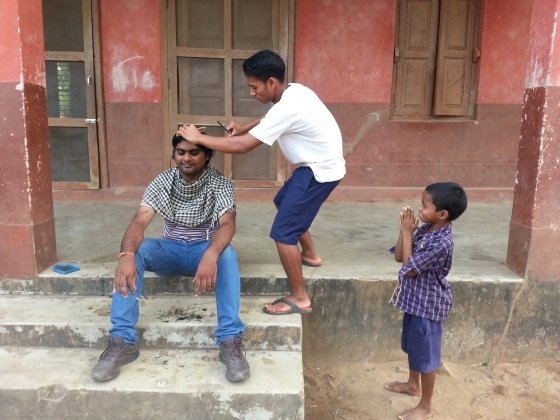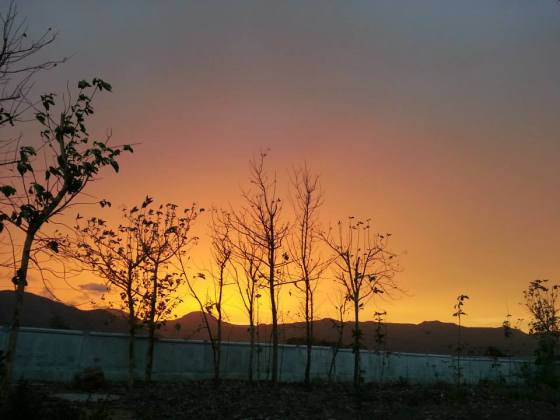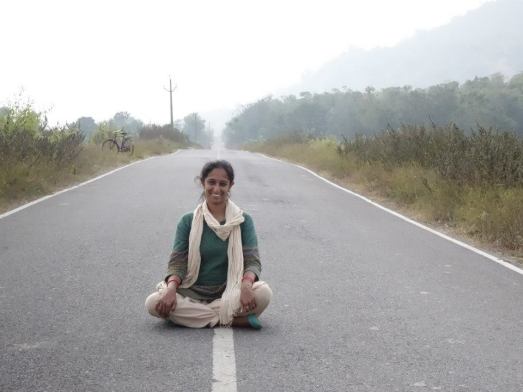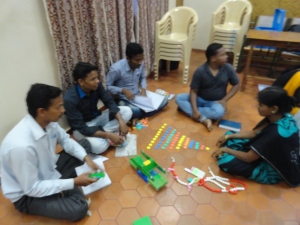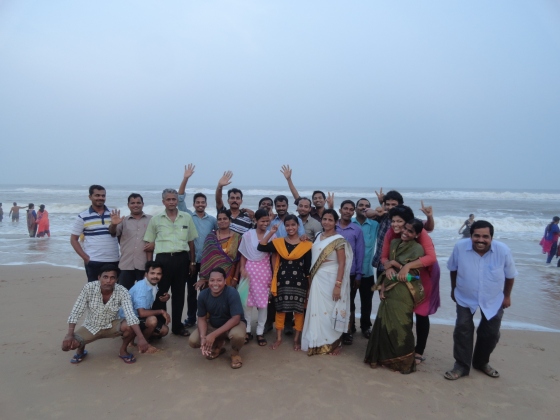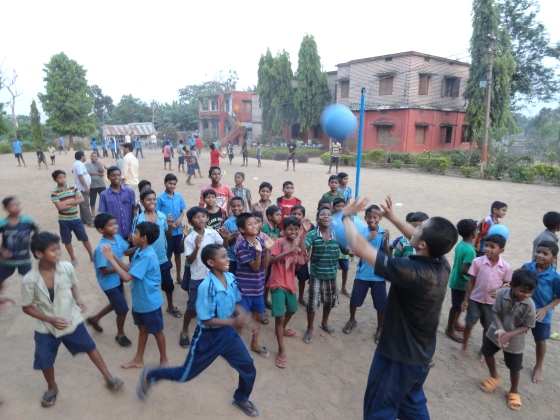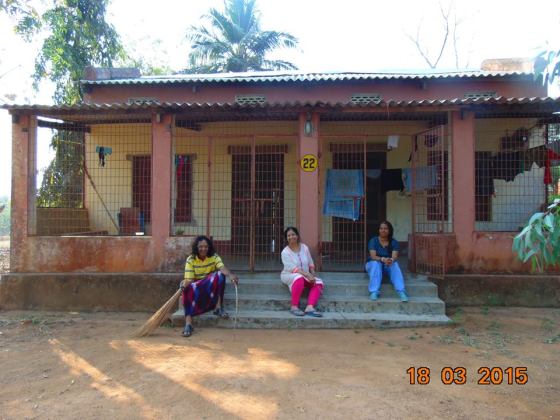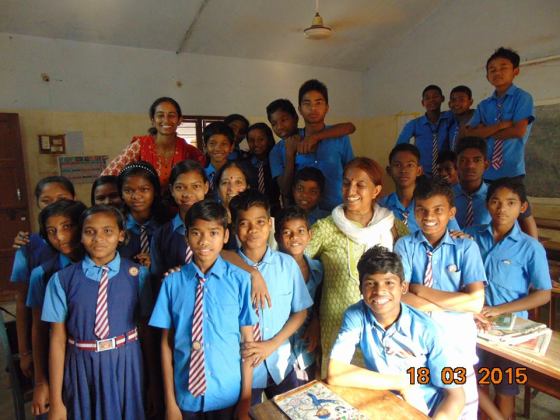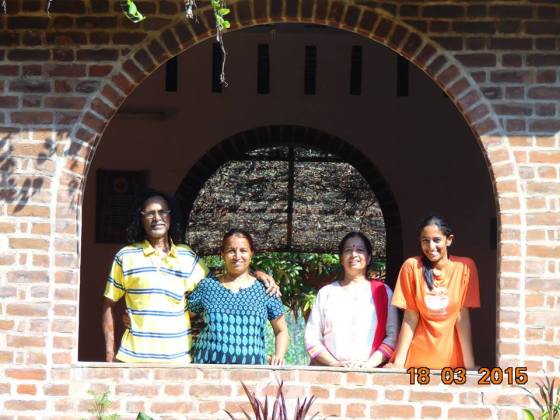I have been pushing this post for 5 months now. When I got home from Odisha, there was so much to do as I had come home after a year.Then, Anand and I got busy – first with the planning and then with the actual travelling- discovering India where we traveled more than 30 different towns and cities.
Yesterday, 1st of April, I saw that it was Utkala Dibasa or Odisha day , it brought back fond memories of the most incredible year in my life. Just as I was reminiscing , I got a call from one of the students to share the news of his admission to a really good school. I just had to write this post.
What a year it was!
There are too many people who made this year the perfect one it was.
Anand was
supportive of my decision to go to Odisha and lived all by himself in far off Chicagoland. Both our parents were cool with the whole idea, and Swat who was suddenly not going to have her hangout buddies made her peace with it too.
SBI Youth for India showed me a path I wouldn’t have dared to take, had it not been for their sound platform and backing.
In Oct 2014, thirteen of us fellows landed in Gram Vikas in Odisha. These guys made me feel like I was back in Suratkal hostel again. Throughout the year, although in different villages, we somehow managed to meet often and built a strong bond.

The 13 madcaps who went to Gram Vikas
My work through the year was in the Gram Vikas school in Kankia village.
The school! What do I say?. As one of the visitors who made just a short visit to the school during my stay said ‘I was here just for 3 days, but I have received more warmth and love than ever before in my life’. The students are gifted and ever-loving. The
teachers are selfless and work tirelessly.
Sharing an excerpt from the Abstract of my project report to give you an idea about these children.
‘Bhabani can fix anything you give him. Jasman can build stuff like an engineer. Tilak’s curiosity will leave you speechless. Salim is silent yet brilliant and wants to be a scientist. Sibani is a Kho-Kho champion and also tops her class. Rajesh is ever curious about astronauts and space. Akash loves to read English story books. Biswanath can solve the Rubik’s cube like a pro. Santi wants to be a mechanical engineer. Ten year old Manini plays chess and can beat adults effortlessly. Jyoti and Sana are weightlifting champs winning yeat after year.
The capability of these delightfully talented tribal children , most of them first-generation-learners shocked me beyond belief when I met them. I was lucky enough to spend a year with them. Here’s a brief report of how I spent my fellowship at the Gram Vikas Residential School trying to help these wonderful curious minds get a better platform and exposure, through new and innovative methods of teaching, which opens up an exciting world of learning for them. Today, I hope I leave behind students and teachers who are digitally equipped to embrace the new India, also having cultivated the hunger to learn more every single day. The teachers are excited to take this forward in the years to come.’
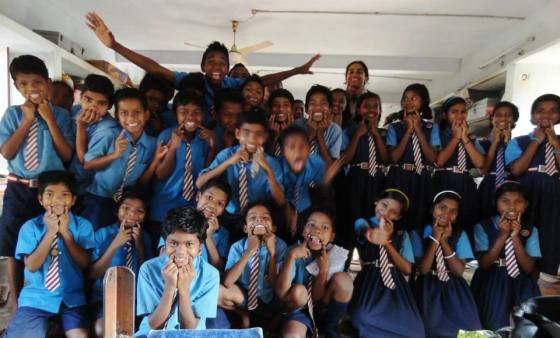
If you’re happy happy happy ….


Weighlifting champ Sanatan

Multitalented Kispirini

Ananta who drew something for me everyday
I had a great time living with these bright minds, teaching them something and learning so much more from them.
I thoroughly enjoyed my everyday- be it fun with English with the 3rd graders, teaching computers to the teachers and students, making ppts with the headmistress , dancing in the hostel with the girls, watching all the kids perform in the cultural evenings, teaching the students or teachers to make the Va, Sha or Za sounds(Odia doesnt have these sounds- – finally gave up deciding their accent was cute ), randomly being announced as chief guest on the mic when the actual chief guest bails and making speeches in my broken Odia, learning Odia from the kids, watching animation movies with the kids, watching kids express themselves fearlessly in Kalpanadham(Creative center established by the efforts of Shalini), watching the kids being amazed by various videos which became a part of their e-learning routine, being able to finally make tutorial videos effortlessly in Odia, eating bhajjis made from freshly harvested veggies in Mili’s backyard, conversations with Joe Sir(founder of Gram Vikas ) which always made me think and gave me new perspective, banter with Jyoti, watching movies with Omm, night outs with the fellows, singing sessions with our rockstars Sid and Nino or chatting non-stop with my roomie Arati and Mili!

Learning through action songs

Learning Math could be fun too!
For the first time in my life, work seemed so pleasurable – day in and day out. Not a single day did I feel ‘ Omg what have I gotten into?’. And this wouldn’t have been the same had I not stayed in the school. Having these kids around you all the time really pumps your energy up! If I had just stayed in a village where people are super busy during the day, I doubt I would have enjoyed myself as much.
The enthusiasm and energy with which every festival and every event was celebrated was mindboggling. Pretty much all of the 500 students and all teachers got involved in some way or the other- prep for dance and music programmes, making a really big clay idol if its a Hindu festival, decorating the entire school, fetching bamboo and building the stage, helping with the cooking , cleaning – well, sooo many things! And then the actual celebration- complete with song , dance, feast, bhajans – whatever the occasion demanded. The high school kids would take complete leadership and ownership and even spend some sleepless nights so that its all set to perfection, the younger ones would do smaller jobs like collect leaves and flowers for decoration.

Children building the stage from scratch
My parents who were worried about me living in a far off village were more than just relieved when they
visited – they loved the place and the kids!

Amma and doddi with the kids

My daddy strongest
Whenever I needed any help for my work , I did not even have to look beyond friends and family – all of you supported me. Be it with the sets of
books for the libraries, English teaching material, the Math kits for all the Gram Vikas schools, the headphones for the knowledge center, printing the hand-illustrated computer books(made by the kids) and tutorial videos, the generous supplies for art in Kalpanadham, ideas for the
knowledge center ( which finally went to on to be a super success) or board games for the hostels- I always had support.
Odia folk on twitter especially were also very supportive – getting a laptop from a stranger (all the way in Chennai) who was looking to help, was icing on the cake and the laptop is being used by teachers regularly now.
Thank you Akshara foundation, IDEK, Pratham books, Amar chitra katha, Genki English and so many others whose teaching material we used successfully in school.
Thank you Seshi mama, Suman, Supriya, Nagamani, Girish, Nirmal, Anisha, Stallone, Anjali, Sandesh, Nihar, BbsrBuzz, Anand, Swat, Reeja, Khyati, Ramya, Raghu, Navu, Appa, Amma, Swat, Anand for helping and supporting through the year.
Thank you Mili, Arati, Geeta di, Urmila di, Jyoti, Joe Sir, all the students and teachers and so many more people.
Thank you Srikrishna, Mansi , Nino, Varun, Shalini, PV, Sanjay, Mrigs, Sid, Souvik for all the good times.
Thank you Geeta ma’am, Shuvajit and Sadaf for running the YFI programme so diligently and passionately!
Sincere apologies, I know I am missing some names
More than anybody else I think I have to thank Mili , younger than me – but behaved like my mommy taking care of me, ensuring I had my meals and being there for me always.

Mili.

The kids who made the computer book

Watching videos in the knowledge center

Cover page by Jasman, Class V made using MS Paint

Cover page by Hrushi, Class V made using MS Paint
Like the happiness quotient wasn’t high enough , to add to it, Odisha is such a beautiful place!
The Gram Vikas campus was so beautiful , the hills around the school made it just perfect.

Paddy fields next to the school

What a location for a playground eh?
The sky was so different and beautiful every single day – I could never pick a favourite!
Looking back, the year spent in Odisha has definitely been more than just a life changing experience for me, and I am not saying it just like that. I am short of words to describe what it means to me. It has
changed my perspectives in so many ways and taught me so much ; as clichéd as it may sound – It did really teach me to appreciate life and the small joys it has to offer.
I just want to say – THANK YOU ODISHA.
PS: Apologies for repetition of pics in the blog as the laptop which had all my pics is currently gone for repair and I can’t access them 😦





